Last updated: July 25, 2022
Article
2021 Regional Science and Stewardship Highlights
Connecting with Parks through Science
National parks strike awe in all of us, whether it be through dramatic views, captivating histories, or the knowledge we gain of their fascinating ecosystems. Across the National Park Service (NPS), scientists are uncovering the stories of the land, water, and air around us. Their findings share nature’s secrets to help us recognize our connections with natural spaces and allow us to deeply understand the unique ecosystems and inhabitants that exist within our parks.
The complexity of science and learning the reality of human caused climate change can be overwhelming. However, taking time to pause and learn about our natural world can offer a way to ground ourselves through understanding our relationship with it.
Looking forward, we want to evoke the same awe one feels when experiencing the essence of parks through the way we communicate science. To create the opportunity to form connections through knowledge, we strive for science communication that is accessible and understandable for all, sensitive to diverse beliefs and social contexts, and strong in messaging to encourage others to care about the natural and human elements that the NPS protects. Diverse representation in the way science is communicated and conducted is also principal to allow everybody to see themselves in science.
These snapshots of NPS efforts across Interior Regions 8, 9, 10, and 12 exemplify how scientific initiatives can lead to new discoveries, form partnerships, and reveal the unseen stories of the world around us. Sharing these stories is a chance to celebrate the dedicated people and extraordinary ecosystems that parks protect.
Erin Baer, Natural Resources and Science Conservation Fellow
Kayla Fermin, Biological Science Technician at Lewis and Clark National Historical Park
Emily Gotesman, Facility Management Fellow
Amber Reyes, Geographic Information Systems Specialist Intern
The following highlights are divided into six categories that share how stewardship across the region is serving the NPS mission of conserving and protecting our parks for future generations.
Collaboration
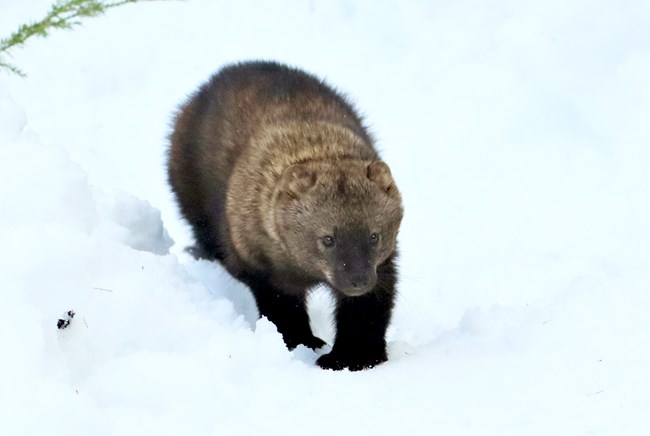
NPS / Jason Ransom
Wild Fishers Born in North Cascades National Park for the First Time Since Reintroduction
State and federal biologists found the first wild fishers born in the North Cascades in perhaps half a century. A female fisher was detected on a trail camera moving four kits at her den in western Chelan County on April 18, 2021. The NPS is grateful for partnerships with the Washington Department of Fish and Wildlife, Conservation Northwest, Calgary Zoo, the Nisqually Tribe and others that made the restoration of fishers to their former homes possible. The birth of these fishers brings hope to greater ecosystem recovery. This video highlights the partnerships that are restoring the fisher population.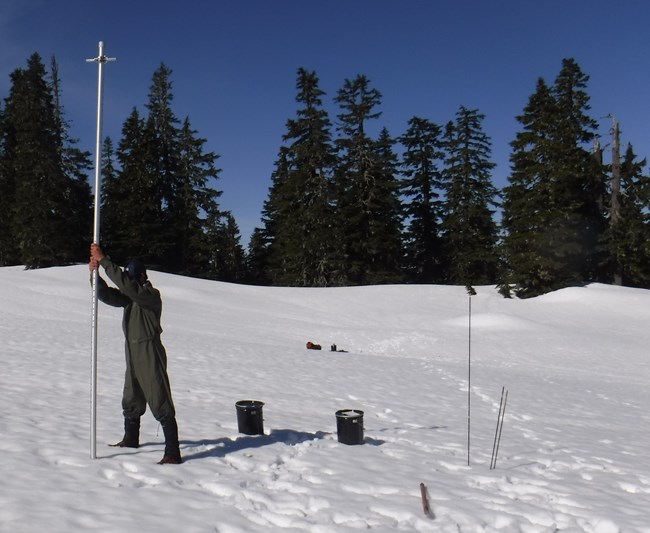
NPS
Finding Microplastics in Unexpected Places in the North Coast and Cascades Network
Most people might expect the conditions in our large, wild national parks to be free from human-made chemicals and contaminants. In 2018 and 2019, park staff in the Pacific Northwest tested that assumption and discovered microplastics in snowpack and even invertebrate guts. With funding from the Washington National Parks Fund, NPS, and US Geological Survey, ecologists partnered with Western Washington University to determine the extent of the contamination in 2021. Preliminary results suggest that there are microplastics present in every snow sample collected across the three large wilderness parks in the North Coast and Cascades Network.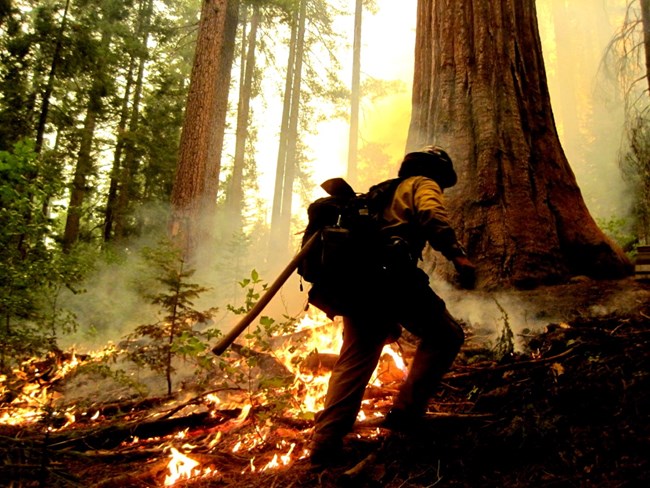
NPS
Quadruple Threat Against Giant Sequoias in Yosemite and Sequoia-Kings Canyon National Parks
Giant sequoias are one of the oldest, largest, and most fire and disease adapted species on the planet. However, recent drought, novel insect attacks, low sapling survival, and high intensity fires pose a quadruple threat to these forest giants. Some factors can build off others to have severe impacts on giant sequoias. For instance, drought in fuel-loaded forests contributed to high intensity fires that killed nearly 20% of the adult sequoia population in the Sierra Nevada over the past two years. To prevent further sequoia loss, scientists, managers, and firefighters are collaborating across agencies. Efforts include sharing tips and tools for giant sequoia management, planning and implementing actions to increase forest resilience, and improving public communication about giant sequoia conservation. Watch this video to learn more about the threats to giant sequoias.
Creating Cultural Connections
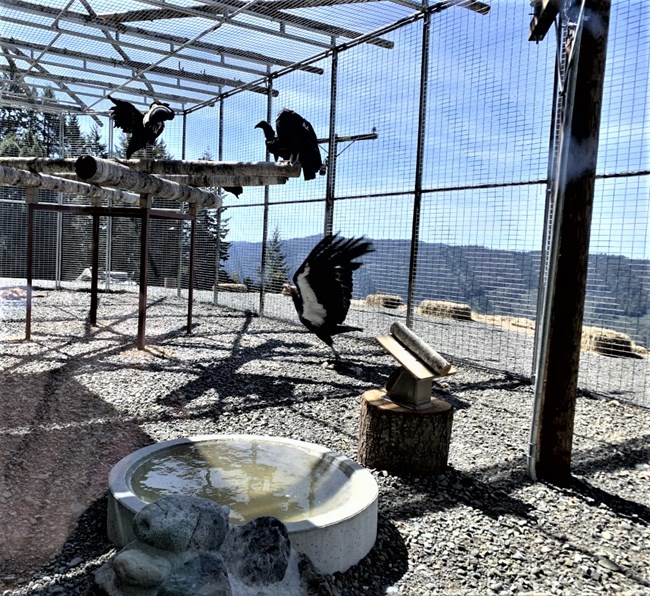
NPS / Denise Louie
Returning California Condors to Yurok Ancestral Territory and Redwood National and State Parks
California condors had been absent in the skies of Yurok Ancestral Territory in Northern California for over a century. However, a partnership between the Yurok Tribe, NPS, and others is fulfilling a long-standing dream of restoring these birds to their native range there. Thanks to strong efforts for this project in 2021 and a decade preceding, the Yurok Tribe Wildlife Department released young condors at Redwood National and State Parks in Spring 2022. The return of the California condor—Prey-go-neesh in the Yurok language—contributes to the restoration of cultural values and sovereignty of the Yurok Tribe as well as to restoration goals of the NPS. Collaboration among the tribe, the NPS, and a host of regional and local partners has been an important factor in the success of the planning phase of this effort and will continue to be a vital tool for recovery.
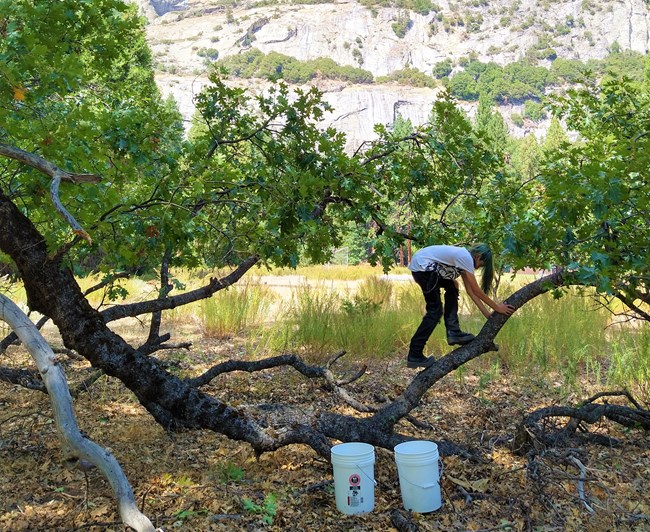
NPS
Black Oak Tribal Tending and Stewardship Days in Yosemite Valley
Since time immemorial, black oaks have been celebrated and cared for by indigenous peoples throughout California. Traditionally, acorn was a main food staple and today is still widely sought and celebrated at acorn festivals and tribal gatherings. For decades, black oak research in Yosemite Valley has shown poor sapling recruitment. In August 2021, a group of 22 Miwuk, Paiute, and Chukchansi tribal members collected acorns and made burn piles from dead and downed oaks in Yosemite Valley, helping to reignite traditional oak stewardship in the 21st century and promote longevity of this culturally significant species. Restoring tribal stewardship and cultural burning may help preserve black oaks and the qualities they are renown for, contributing to a more resilient ecosystem. The last cultural burn in Yosemite occurred in 2005.Discovery and Innovation
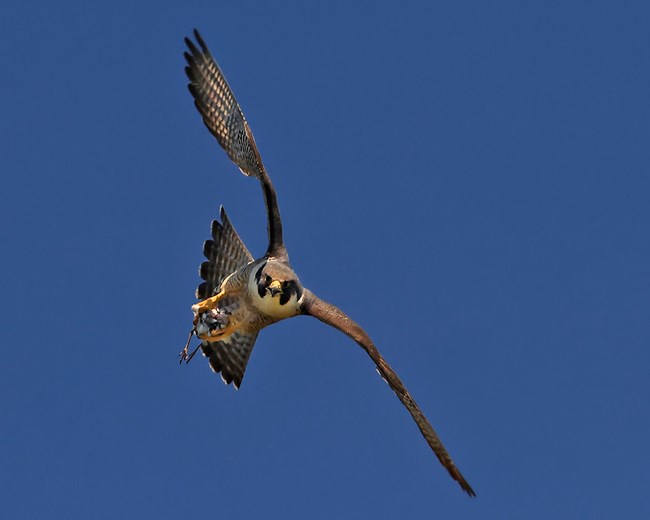
NPS / Gavin Emmons
A Fantastic Year for Falcons at Pinnacles National Park
For the last six years, raptor monitoring staff and volunteers at Pinnacles National Park often celebrated new milestones for the park’s returning peregrine falcons. At the same time, they were recording below-average numbers of falcon fledglings (young that successfully leave their nests) overall. In 2020, they found a total of 22 fledglings, up from 21 in 2019. However, when the breeding season concluded in 2021, the monitoring team was especially thrilled to report a total of 40 falcon fledglings! That number has been matched once and surpassed only twice in the past 35 years of the monitoring program, most recently in 2013.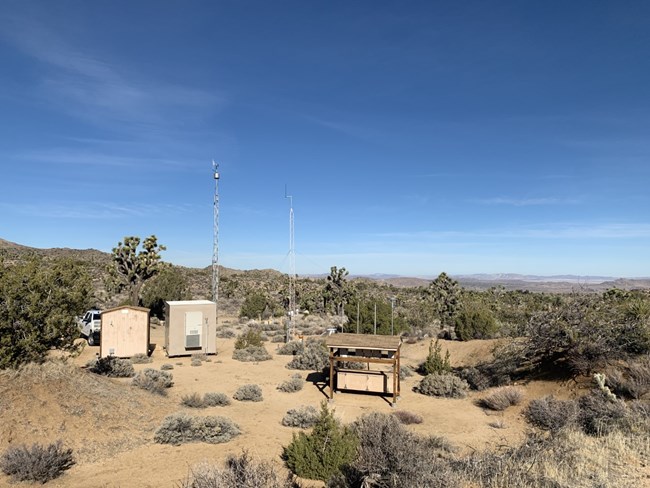
NPS
Joshua Tree National Park Joining a Nationwide Aerosol Monitoring Project
Joshua Tree National Park is one of only 12 sites nationwide joining the Atmospheric Science and Chemistry mEasurement NeTwork (ASCENT) project—a $12 million National Science Foundation grant awarded to Principal Investigator Nga Lee Ng of the Georgia Institute of Technology. The ASCENT project will provide the first high time-resolution (every 1 to 15 minutes), long-term measurements of the properties of atmospheric particulates, known as aerosols. Aerosols contribute to poor air quality and have significant effects on climate through direct interaction with sunlight. Data from ASCENT will inform how the composition and abundance of aerosols may be changing. Possible influences include the modernization of electricity production (coal to natural gas to renewables) and transportation (gasoline to electric vehicles). Park staff will be trained to operate and maintain the equipment, thereby playing a key role in what the National Science Foundation states “will allow US researchers to remain competitive in a global research environment.”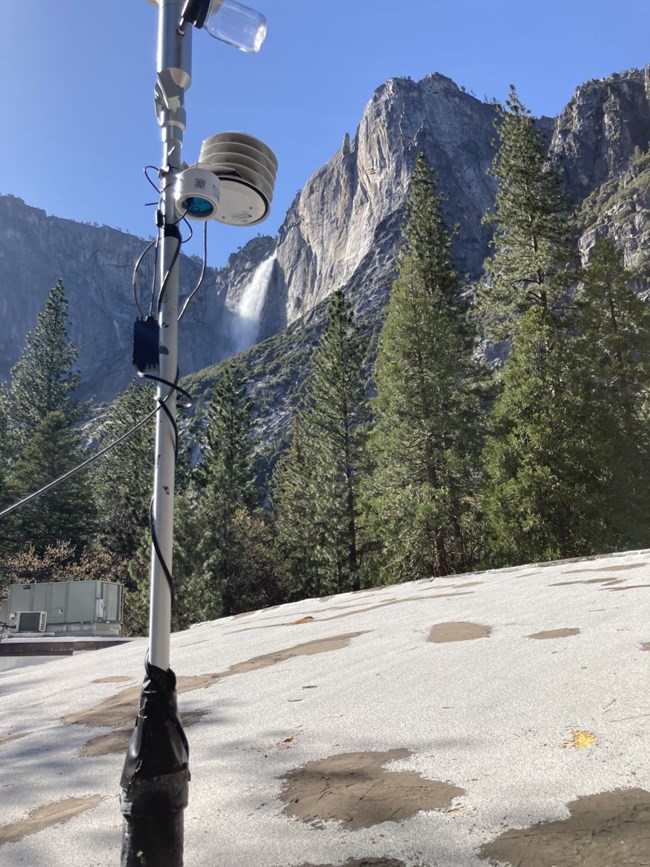
NPS / Anthony Prenni
Smoke! More Parks Can Now Track Air Quality During Wildfires
In 2021, the Air Resources Division deployed the Smoke Monitoring Pilot Program to distribute low-cost PurpleAir monitors to parks. These monitors measure particulate matter from fires, industry, exhaust, and other sources. Data from the monitors are converted to Environmental Protection Agency's NowCast Air Quality Index to allow park staff and visitors to understand health advisory information based on air quality in real time on the NPS Live Air Quality Page. Additionally, the values correlate with the Region's Safety, Health and Wellness guidance document to support park operational decision making. Currently, 60 parks nationwide participate in the program, 23 of which are in the Pacific West Region, to better track and communicate about air quality. With wildfire presence increasing throughout the region, these tools help NPS staff understand when the air quality is and is not safe for recreational activities. To receive a PurpleAir Monitor in your park, e-mail us.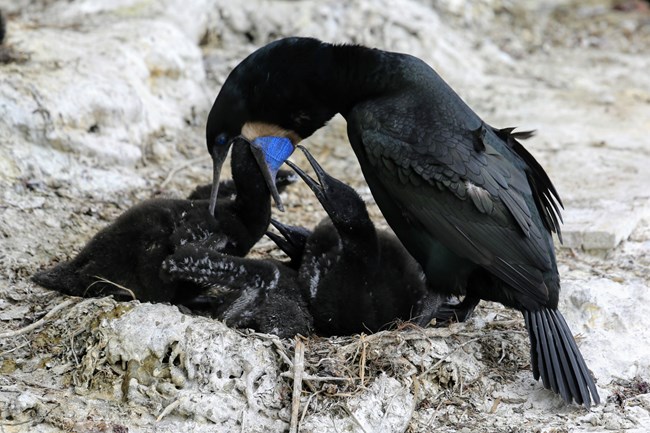
NPS / Lidia D’Amico
2021 Marks the Highest Recorded Number of Brandt’s Cormorant Breeding Pairs at Alcatraz Island
Brandt's cormorants are colonial nesting seabirds that began repopulating Alcatraz Island in the early 1990s with only a handful nesting at the time. Since then, about 2,000 breeding pairs return each year to nest on Alcatraz Island. In 2021, staff biologists observed a record-breaking number of 3,368 breeding pairs, the most ever observed. The island’s pandemic shutdown in 2020 and into 2021, along with a good northern anchovy run (their main prey food), most likely contributed to the increase in breeding numbers.Nimble Action to Address Emerging Issues
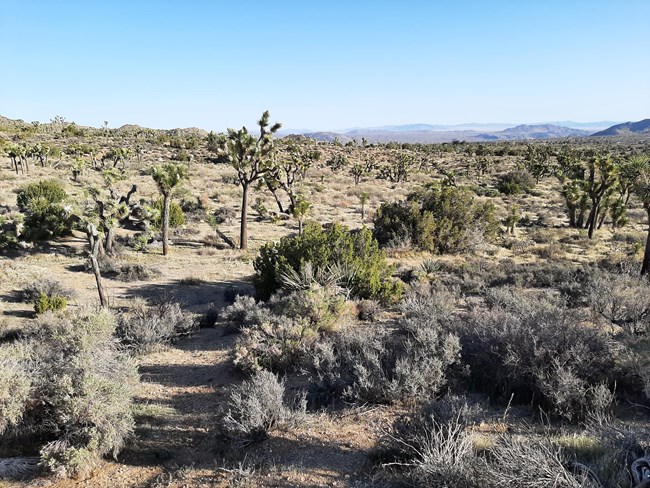
NPS
Addressing Multiple Threats to Joshua Tree National Park’s Namesake Species
The warming climate and the invasion of annual grasses create conditions for more frequent and extensive fires in the Mojave Desert. Specifically, invasive grasses create a landscape of fine fuels that allow fire to easily spread. Climate change and wildfires reduce habitat for the namesake trees of Joshua Tree National Park, leaving the species, which is not fire adapted, in danger. In an effort to mitigate climate and more severe fire threats to the species, the park is implementing proactive fire mitigation strategies and improving seed collection and storage. These actions aim to reduce risk of Joshua tree extirpation and preserve options for new tree establishment in the future.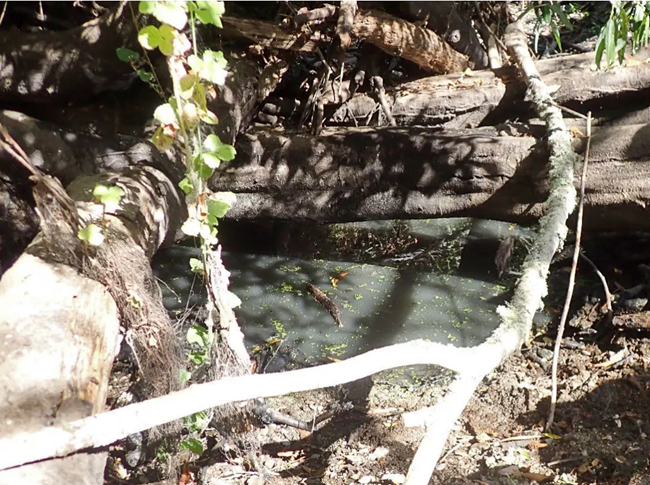
NPS / Michael Reighmuth
Looking Out for the Little Guy: Biologists Help a Tiny Crustacean Threatened by Drought at Point Reyes National Seashore
Sometimes it's rough for aquatic species, such as the federally-endangered California Freshwater Shrimp, in a changing world. At Point Reyes National Seashore, large and isolated pools in the lower section of Olema Creek are common during summer months. These pools provide habitat for aquatic life through the dry season. However, last September, the San Francisco Bay Area Network Coho and Steelhead Monitoring Crew noticed fewer, quickly shrinking pools. The crew also found high densities of California freshwater shrimp seeking a crowded refuge in these dwindling waters. Realizing that several pools may not be viable habitat for the entirety of the season, crew members relocated over 250 shrimp to larger pools.
NPS
Rearing the Rare Island Marble Butterfly at San Juan Island National Historical Park
San Juan Island National Historical Park is home to the only remaining population of the federally endangered island marble butterfly (Euchloe ausonides insulanus). Each year, park staff collect 100-300 butterflies from the wild while they are in their caterpillar and pupa life stages and bring them into the rearing lab to allow them to metamorphosize into a small and fuzzy butterfly in a space free of threats. The island marble pupates for 10-12 months, in contrast to the monarch which is only in its chrysalis for 8-14 days! While only 5% eggs laid in the wild survive to adulthood, 80-90% survive in the rearing lab. The nimble efforts by park staff, along with federal, state, and local partners, to save the island marble butterfly show how science can be coupled with caring to foster ecosystem restoration.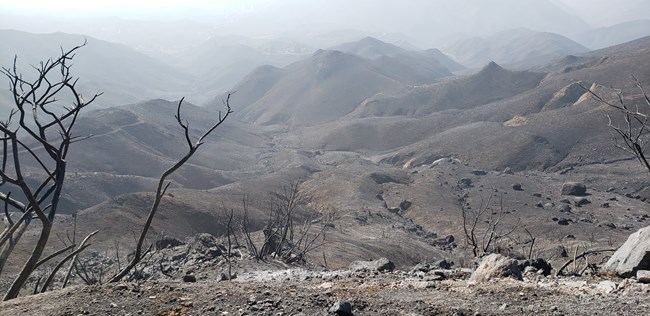
NPS
Post-Fire Recovery at Santa Monica Mountains National Recreation Area
In 2018, the nation's largest urban park, Santa Monica Mountains National Recreation Area, experienced a catastrophic megafire. Following the devastation, park managers devised a plan for post-fire monitoring as part of the long-term vegetation monitoring protocol under the Mediterranean Coast Inventory and Monitoring Program. With the help of extra funding and numerous interns, the park staff were able to double the number of data collection sites and systematically monitor the recovery of native vegetation following a devastating fire. Data collected post-fire will help scientists better understand how plant communities recover from fire and inform future restoration designs.Science Informing Management
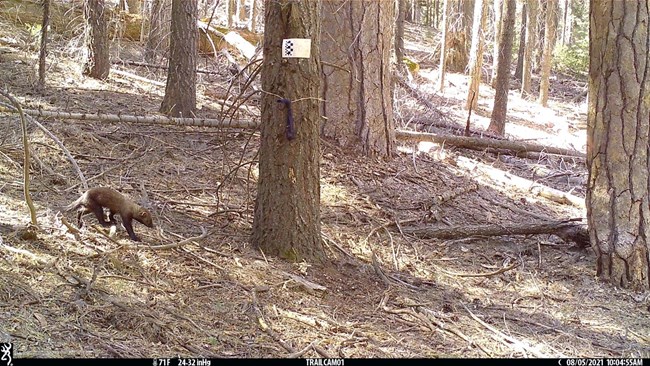
NPS
Impacts of Extreme Wildfire Smoke on Fisher Populations at Sequoia-Kings Canyon and Yosemite National Parks
Wildlife biologists from Sequoia-Kings Canyon National Park, Yosemite National Park, and the U.S. Forest Service are studying the indirect impacts of wildland fire smoke on wildlife, specifically fishers and western gray squirrels. This project looks beyond particulate matter (solid particles and liquid droplets found in the air), to include polycyclic aromatic hydrocarbons. These chemicals released during forest fires can bioaccumulate, cause cancer, and harm reproductive success in animals. Fur samples will help scientists understand dietary, exposure, and stress conditions in the wild animals. In the coming years, this work will determine if fire smoke has serious effects on the endangered fishers and offer suggestions for management decisions to reduce the severity and extent of smoke events through prescribed fire.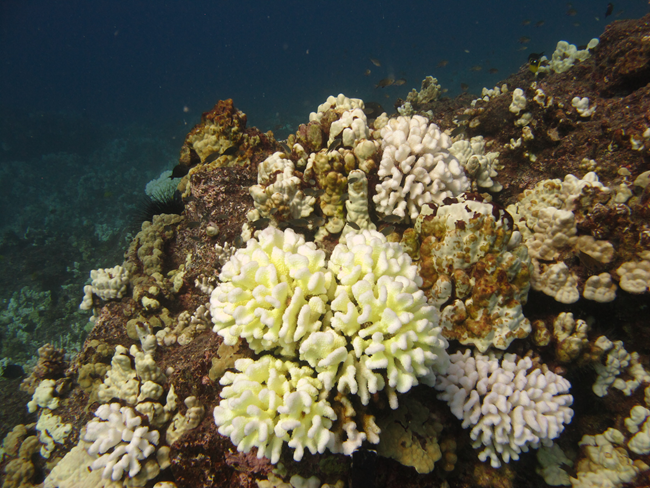
NPS
Tracking Coral Reef Health around the Pacific
Throughout the Pacific, coral reefs are struggling for survival. Warming seawater temperatures cause heat stress in corals and result in bleaching, the whitening of corals due to loss of their symbiotic algae. Frequent and lengthy bleaching periods, or Global Scale Bleaching Events, can lead to coral mortality (the latest one being from 2014-2017). The NPS Pacific Island Inventory and Monitoring Network tracks coral bleaching trends during these events through sea floor, or benthic, surveys at four parks in the Pacific: Kaloko-Honokōhau National Historical Park; Kalaupapa National Historical Park; National Park of American Samoa; and War in the Pacific National Historical Park. Results from the most recent surveys reveal varying changes in coral cover at each park. NPS biologists found significant declines in coral cover at Kaloko-Honokōhau and Kalaupapa, but an increase in cover at National Park of American Samoa. Biologists did not find significant changes at War in the Pacific. The surveys coincided with heat stress events during the 2014-2017 Global Scale Bleaching Event at Kaloko-Honokōhau and National Park of American Samoa, which offered insight into the extent and severity of bleaching at the sample plots. To improve reef resiliency, NPS biologists recommend proactive visitor management strategies, identification and mitigation of point source pollution events, and continued evaluation of heat-tolerant coral.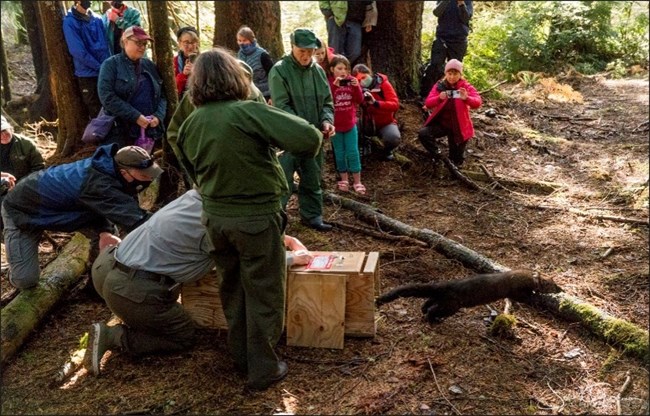
NPS
Improving Genetic Diversity in Olympic National Park’s Fisher Population
The fisher (a member of the weasel family) is once again thriving in numbers at Olympic NP, but research shows that the population is losing genetic diversity. To introduce new genes to the population, park biologists translocated 19 fishers from Alberta, Canada to the park and adjacent forests in 2021. The NPS and Makah Tribal partners released the first five of these fishers near Lake Ozette, which will facilitate the tribe's continued research on the fisher population in the Ozette to Neah Bay region. An assessment of the genetic diversity of the Olympic fisher population 5 to 8 years from now will gauge the success of this effort.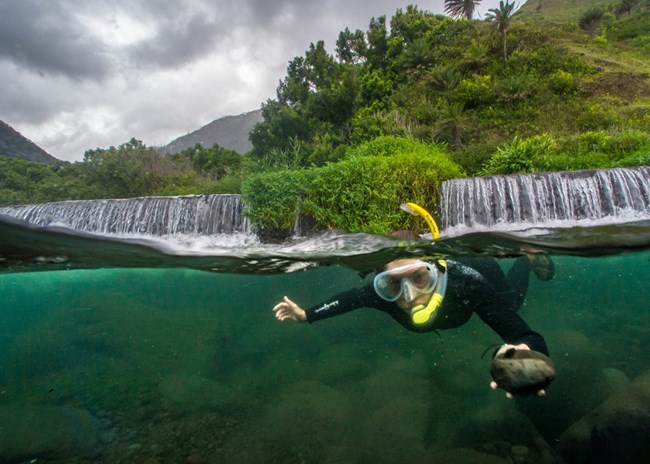
NPS
A Win for Science and Stream Protection at Kalaupapa National Historical Park
Waikolu Stream in Kalaupapa National Historical Park provides critical habitat for endemic Hawai’ian species. Unique species include stream gobies (‘o‘opu) that can climb up waterfalls and the juvenile hihiwai (a native snail) that moves up-stream in a single file line in numbers reaching over 100. Waikolu Stream’s isolation of and the protection of its watershed prevents threats such as overfishing and introduction of invasive species. However, the stream faces other threats. Since the 1950s residents on the Island of Moloka'i have relied on freshwater diversions from Waikolu Stream. This resulted in a large section of the stream drying out during the summer months. The Pacific Island Inventory & Monitoring Network (I&M) has tracked fish and invertebrate quantities, as well as discharge in Waikolu Stream since 2009. In 2021, the I&M team used the data to propose new instream flow standards that will return water back to Waikolu needed to sustain the stream's endemic biodiversity. These efforts proved successful in April of 2022, as the State of Hawai’i’s Commission on Water Resource Management approved new instream flow standards. This is a huge win for science informing management and supporting conservation!
NPS
Protect Yourself, Protect the Reef at Kaloko-Honokōhau National Historical Park with Cape Lookout National Seashore
Chemicals in sunscreens can harm corals and other aquatic life, but alternatives like mineral-based sunscreens and covering up with UV-rated clothing can help protect both you and the reefs. Encouraging park visitors to partake in sunscreen alternatives is difficult to do; therefore, Kaloko-Honokōhau National Historical Park in Hawai’i and Cape Lookout National Seashore in North Carolina enlisted the help of behavioral and social scientists to design and evaluate strategies that minimize barriers for visitors to make more ecologically friendly sun protection choices. The outcome of these efforts was a media campaign to encourage park visitors to make thoughtful choices about sun protection.Youth and Volunteers
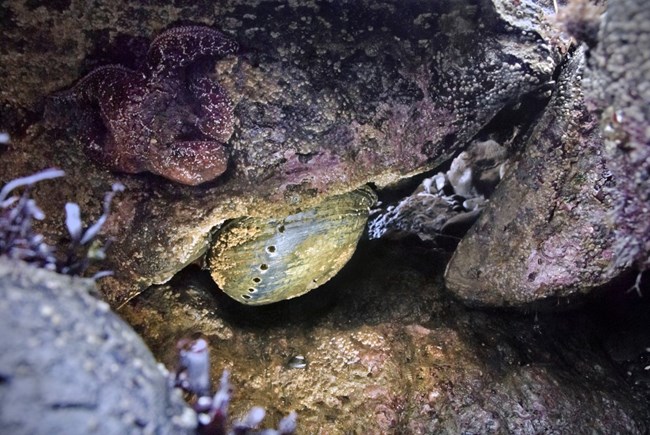
NPS / Jessica Weinberg McClosky
Black Abalone: The Vulnerable Yet Resilient Marine Snail that Bridges the Marine and the Terrestrial at Point Reyes National Seashore
Black abalone used to be one of the most prolific tide pool species along large stretches of the California coast. Sadly, a combination of disease and overharvesting led them to become federally endangered and largely lost from public awareness. A collaboration between Point Reyes National Seashore and the Point Reyes National Seashore Association aims to bring the black abalone back into the spotlight. Science Communication Intern Theodora Mautz created two podcasts and an article to share the diligent efforts of the Black Abalone Recovery Team to restore the populations of these dynamic and resilient creatures. Theodora’s efforts explain the history of black abalone and the future of conservation efforts as she speaks with a handful of experts on strategies, lessons learned, and next steps for black abalone recovery. Listen to the podcasts here!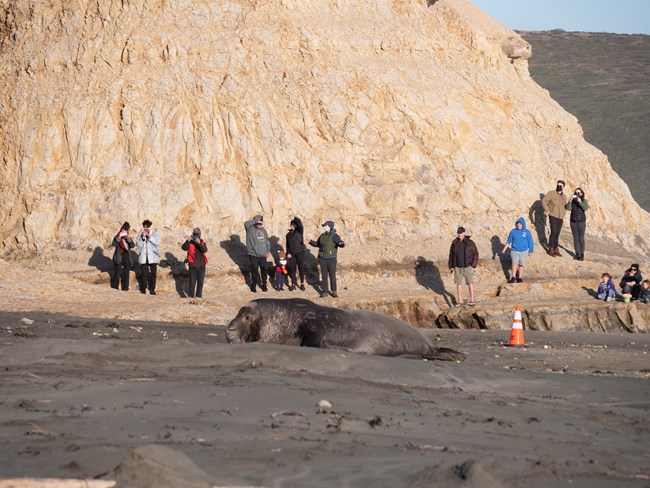
NPS / Carlo Arreglo
Can Northern Elephant Seals and Visitors Share the Beach at Point Reyes National Seashore?
The once extirpated northern elephant seal population is now booming at Point Reyes National Seashore, and populations are expanding into the beaches where people want to be too. Due to increased seal numbers, the park staff enahnced public outreach with the goal of conserving the elephant seal population at Point Reyes while providing education and recreation for visitors. Ellen Murphy, a Scientists in Parks Interpretation and Natural Resources Intern, is keeping both the seals and the public safe on the beaches by frequently surveying the beach for seal activity. Ellen and Lead Docent Katie Ballinger monitor the changing variables on a day-to-day basis to help park staff decide the best way to provide a safe and enjoyable experience at the beach for visitors while not disturbing the elephant seals.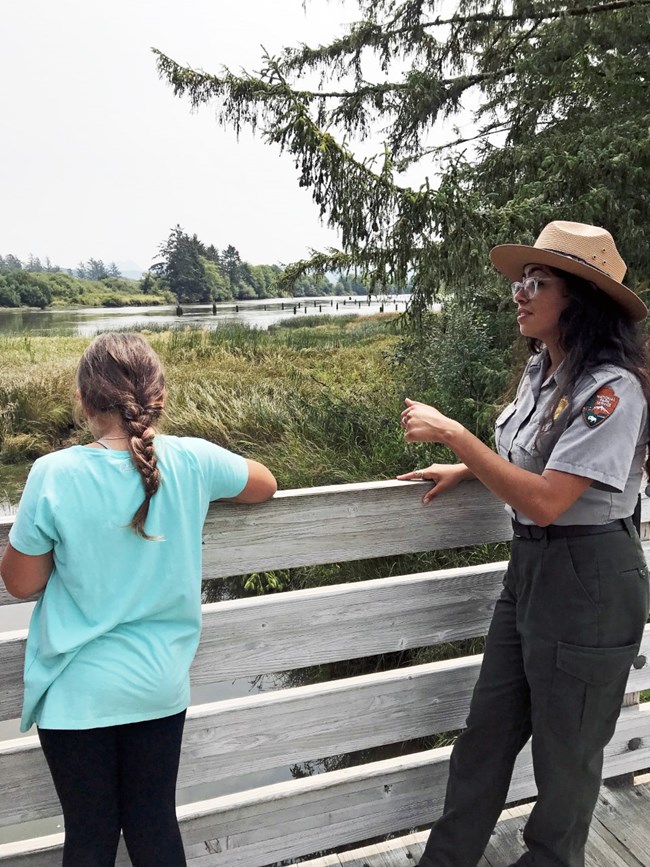
NPS
Celebrating Women in Science: Kayla Fermin
Kayla is the lead Biological Science Technician at Lewis and Clark National Historical Park. While analyzing park vegetation data for her research project as a Mosaics-in-Science intern, she noticed a disconnect in how park science is communicated with the public. In this Dare to Imagine video, Kayla presents how she creates a more accessible understanding of park science by developing digital science communication tools utilizing geographic information systems (GIS). The experiences she shares illustrate the importance of diverse representation in the National Park Service. The Dare to Imagine Project is funded by an Innovation and Impact Grant provided by the National Park Foundation with the goal to highlight the stories of women in science.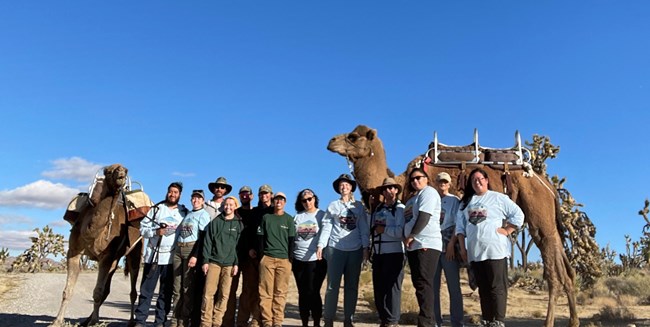
NPS
Leveraging Volunteer Efforts at Mojave National Preserve to Help Joshua Trees Threatened by Climate Change
In response to the 2020 Cima Dome fire, volunteers of all ages and species (yes, species!) banded together to help restore the Joshua tree population at Mojave National Preserve. Cima Dome is a predicted climate refugia for Joshua trees, so these efforts are critical to protect this iconic species and ensure its viability. Click here to watch a video of the impacts of the Cima Dome fire and how volunteer efforts are working to restore Joshua tree populations.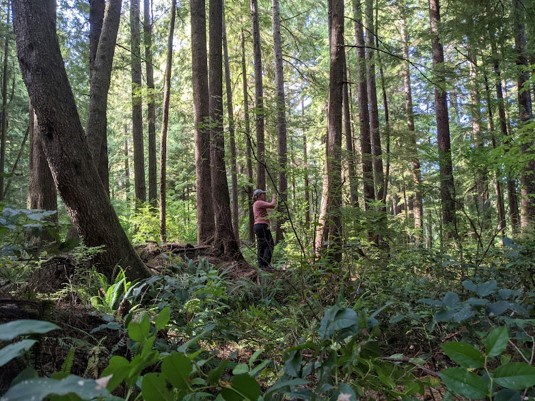
NPS / Meaghan Petix
Lichens Hold the Secret to Understanding Air Quality at Olympic National Park
In the summer of 2021, Washington State University graduate student Meaghan Petix investigated patterns of atmospheric nitrogen deposition across national parks in the Pacific Northwest using tree-loving lichens as biomonitors of potential impact to forest health. Meaghan conducted surveys and collected lichens from in July and August at 16 locations spanning the diverse ecosystems within Olympic National Park, including the Pacific coast, temperate rainforest river valleys, subalpine forests, and dry slopes in the rain shadow of the Olympic Mountains. Currently, park scientists are putting names to each lichen specimen and completing elemental analyses. The resulting data, expected to be in park managers' hands by the end of 2022, will be compared to previously monitored sites at North Cascades National Park to evaluate nitrogen deposition gradients and community health between the parks.Pacific West Regional Director's Awards for Natural Resources
The Regional Director’s Awards for Natural Resources recognize employees who go above and beyond in performance of their duties toward specific achievements. Consideration begins within the Region and then moves forward to National level awards. These award winners were chosen from an exceptional pool of submissions within six natural resource award categories.
The nominations this year were outstanding and a testament to the dedication and caliber of our employees in natural resources stewardship. Congratulations to Lorraine Parsons, Garrett Dickman, Dr. Linh Ahn Cat, Dr. Debra Hughson, Dr. Christy Brigham, and Steve Mietz!
